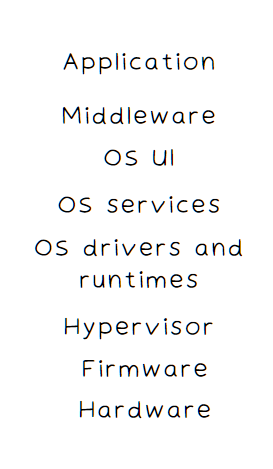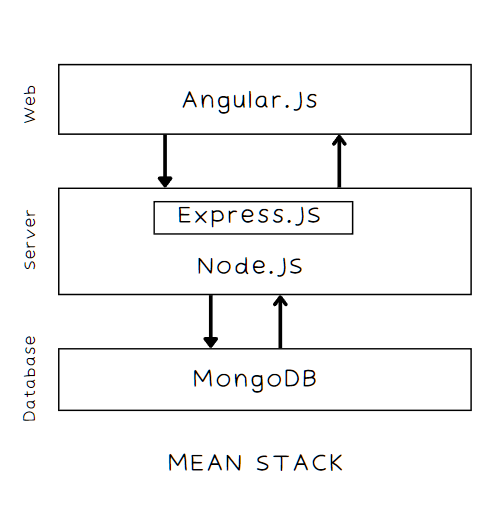What Is Software Stack?
Developers should know about software stack, enabling them to pick the right stack for developing their apps.
Join the DZone community and get the full member experience.
Join For FreeOn the surface, an application may look simple as it aims to solve end-users problems. However, under the hood, a collection of components known as the software stack plays a crucial role in how the application works.
As a developer, you must know about software stack. This article will cover "What is Software Stack?" and its different layers. We'll also cover popular software stacks so that you can learn which software stack to pick for your application development. Let's get started.
What Is Software Stack?
Software Stack is a collection of programs or components needed for an application to run. It is similar to Network’s OSI model, which contains seven layers, with each layer collaborating to transmit data on the internet. Software Stack is no different. Here, each component plays a vital role in application execution.
In most cases, a software stack comprises these components:
- Operating system
- Protocols
- Architectural layers
- Databases and function calls
- Runtime environment
These components are stacked on top of each other, with the lower-level components managing hardware interaction. On the other hand, the higher-level components deal with end-user services and tasks. Also, each component within a stack can work in tandem to execute simple or complex tasks across the stack.

The complexity of the software stack depends on the application’s functionality. This means it can include an organization’s custom on-premise resources or services/solutions from cloud providers/SaaS vendors.
The software stack’s customizability means there are no fixed standards or approaches. However, the software stack aims to provide the necessary feature-set for application development, operation, delivery, and maintenance. The software stack can be as simple as consisting of OS, programming language tools, database, and application to being complex with the addition of more components such as computing, networking, user interface, virtualization, and abstracted physical resources.
Different Software Stack Layers
As each component has a different function to meet, a software stack can broadly be divided into three layers.
- Presentation layer: The presentation layer deals with the user’s interface visited through a web-based application portal or website.
- Logic layer: The logic layer takes care of two important tasks:
- Fulfill application requests using business rules and application logic.
- Transmit data between presentation and data layer.
- Data layer: Lastly, we have a data layer that handles the server-side aspect of the application. It passes information to the logic layer, which is then calculated based on application & business rules before sending it to the presentation layer.
You can use different technologies for each layer to achieve its desired goal. For example, you need front-end technologies such as HTML5, CSS, and JavaScript for the presentation layer. Similarly, you can choose database technologies such as MongoDB and MySQL for the data layer. As for the logic layer, you can choose programming languages such as Python, Java, and C# to code it.
Developers don’t have to focus on every aspect of application development. Any app development is primarily divided into two components: back-end and front-end. Some developers specialize in back-end development, while others in front-end development. However, full-stack developers can do both. You can think of the application’s front end as a presentation layer. It focuses on user experience and interfaces and requires the use of front-end technologies to develop. The back-end developers create the logic layer, which interacts with the presentation layer using back-end programming languages and tools.
Popular Software Stacks
There are many established software stacks in the market. Some of the popular ones include:
MEAN and MEVN
MEAN stands for MongoDB, Express, Angular, and Node.js. It is a modern web development stack. It is unique because it doesn’t rely on any operating system, thanks to Node.js, a server-side scripting platform. The other components include MongoDB, a NoSQL document database, and Angular.JS for front-end development. Here, Express.JS is a web framework for Node.js.

MEVN is a popular alternative to MEAN. Here, Vue.js is a lightweight, minimalistic JavaScript framework that replaces Angular.js. Due to its minimalistic approach, MEVN is highly customizable but relies on third-party add-ons developed and managed by its community.
LAMP
LAMP is one of the oldest and most well-known web development stacks. LAMP components include Linux, Apache, MySQL, and PHP. It is an open-source stack that gives you all the tools to create and manage web applications. Linux is the operating system with Apache as the server. For databases, the stack implements MySQL, a popular database solution. Lastly, we have Python, Perl, or PHP as the programming language to write scripts. The LAMP stack components complement each other and hence are loosely coupled.
Apache CloudStack
Apache CloudStack, an open-source cloud management enterprise stack. It provides enterprises to implement and manage infrastructure-as-a-service(IaaS). CloudStack includes hypervisors, APIs, and optimal service layers.
There are many other popular software stacks, including:
- BCHS: OpenBSD operating system, C programming language, httpd web server, and SQLite database.
- LLMP: Linux operating system, Lighttpd web server, MariaDB or MySQL database management, PHP/Perl/Python programming language
- MAMP: Mac OS X operating system, Apache web server, MariaDB or MySQL database, and Python/Perl/PHP programming languages.
Software Stack vs Technology Stack
The technology stack covers a larger landscape than the software stack as it includes hardware and software components in an information technology(IT) ecosystem. This means a technology stack includes all required to deploy and manage applications. A technology stack can include:
- Storage
- Networking
- Middleware
- Databases
- Hardware
- Software components
There are different technology stacks that organizations can use to manage and deploy applications.
- Storage stack: The server stacks include database software, runtime environments, and web services software.
- Cloud infrastructure stack: Cloud infrastructure stack is the most flexible as it supports adding more features through add-ons such as security, monitoring, analytics, and so on. At its core, the cloud infrastructure slack consists of a platform and abstracted infrastructure, services, and applications.
- Server stack: On the other hand, the storage stack includes virtualization and networking components run on servers using server software.
- Marketing stack: The marketing stack consists of a content marketing system(CMS), customer relationship management software(CRM), tracking solution, analytics solution, and email platform.
Frequently Asked Questions?
Q: Is the Software stack customizable?
A: The software stack aims to provide the necessary feature-set for developers to develop, deliver and operate applications. It is customizable and can be simple or complex.
Q: What are the core software stack components?
A: Even though a software stack is customizable, it does have core components. It includes a database, programming language support tools, an operation system, and the application.
Q: What is a single software stack?
A: Single software stacks are developed and managed by a single provider. This means the software stack is part of an ecosystem and offers efficiency but not flexibility.
Opinions expressed by DZone contributors are their own.

Comments